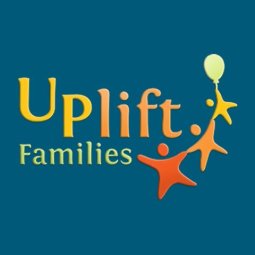Research shows that people who experience adversity early in life are more likely to experience poor outcomes in areas like learning, relationships, physical and mental health; including addiction. We also know this is NOT true for everyone who experiences early adversity; this second group is often called resilient since they had a positive outcome in the face of negative circumstances.
So how do we build resilience?
How do we create an environment that produces positive outcomes in the face of negative circumstances?
Before we answer that question; I’d like you to imagine a child’s development like a scale; this scale is then placed in a child’s community. The scale has two sides where experiences get stacked, one side gets stacked with negative experiences like stress, violence, and neglect; the other gets stacked with positive experiences like healthy relationships, skill building opportunities, and community resources. In the same way, a teeter-totter tips from side to side these experiences can tip the outcomes of a child’s development.

Simply adding positive experiences and removing negative ones; however is not the full story. Most of us know of people who seem to thrive in spite of difficult childhoods, or those who struggle in life even though caregivers and strong communities loaded their scales with predominantly positive experiences.
This is where the fulcrum comes in. You can think of this fulcrum as the genetic make-up of the child. We know that this genetic starting point is an important factor in how a child responds to experiences and how they turn out.


The good news is that this fulcrum is not fixed; instead, it is a sliding set point. Over time the things that load and tip the scale can actually shift the position of the fulcrum. We also know that there are specific points in human development where this fulcrum is easier to shift. Two of these highly shift-able periods are early childhood and adolescence.

Now that we understand the parts of the scale let’s get back to our question.
How do we create an environment that supports positive outcomes in the face of negative experiences?
First, we need to understand that resilience is not a product of negative experiences, but rather a reaction to it. So while eliminating negative experiences may not be possible or even the goal it is important to look for ways to offload some of the weight from the negative side.
Next, we need to understand that weighing the scale toward the positive, particularly during highly shift-able periods, can actually move the fulcrum in a more resilient direction, strengthening brain architecture so that a child is better prepared to bounce back from significant life stresses.
With a shift in understanding, we can look to action. There are two main areas that we can look to in an effort to add or subtract from either side of the scale. One is nurturing relationships and the other environmental supports.
There are a number of amazing resources out there on nurturing relationships. One of the most user-friendly is the social development strategy. For more info check out this video: https://www.youtube.com/watch?v=CqeXqGAniV8.
Environmental supports, on the other hand, may be less familiar to most people, particularly when it comes to how they can remove weights from the negative and add it to the positive on a child’s resilience scale even in the absence of nurturing relationships. Let’s take one example of an environmental support: Laws that keep alcohol out of the hands those below 21. This is a powerful environmental support that not only limits immediate negative additions to an adolescence’s scale such as violence, sexual assault, and academic failure; but we also know that substances like alcohol can be heavy factors in sliding a young person’s fulcrum (i.e. the genetic set point) in a negative direction. These environmental supports are sometimes more difficult to communicate than the picture of a supportive parent, teacher, or coach but it is vital to understand that these environmental supports can be powerful in the making or breaking of those nurturing relationships that parents, teachers, and coaches work so hard to create.
So while each of us can and SHOULD look for every possible way to engage in nurturing relationships with the young people in our lives, we should also look for ways to get involved with our communities so we can produce environmental supports that will strengthen and build upon those nurturing relationships in an effort to balance the scale in favor of all kids.
1 Kendall-Taylor, N. (2012). “The Resilience Scale: Using Metaphors to Communicate a Developmental Perspective on Resilience.” Washington, DC: FrameWorks Institute.
By Tiffany Van Sickle

